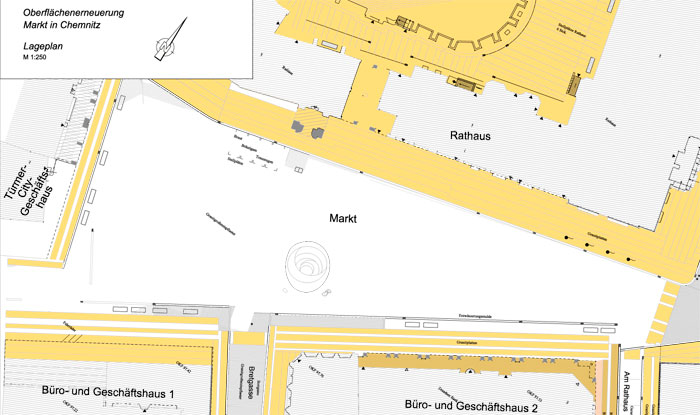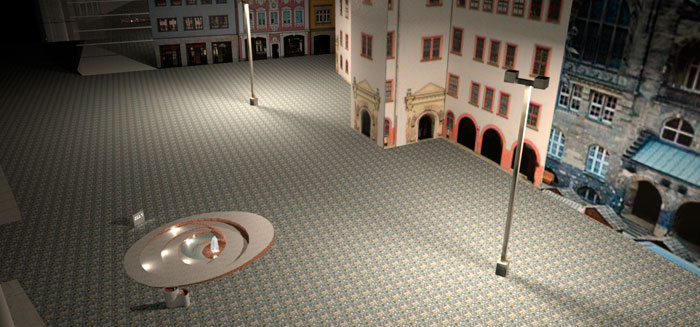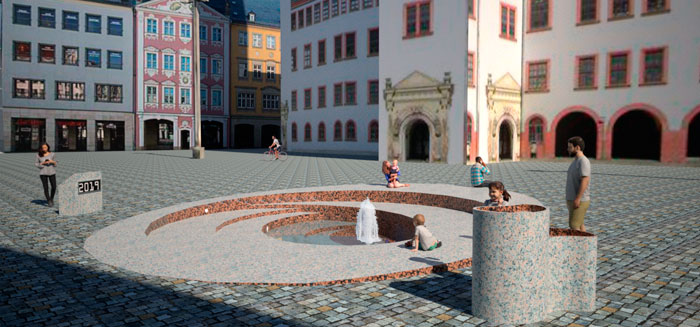Chemnitz City Fountain Public Art Competition
(Chemnitz 2019, awarded 3rd Prize)
The City of Chemnitz put out a public art competition for the design of a fountain for its market square. My proposal was a fountain whose water height was determined by sea level data. The higher the sea level, the higher the stream. Ironically, the more majestic the fountain looks, the more danger it forebodes.
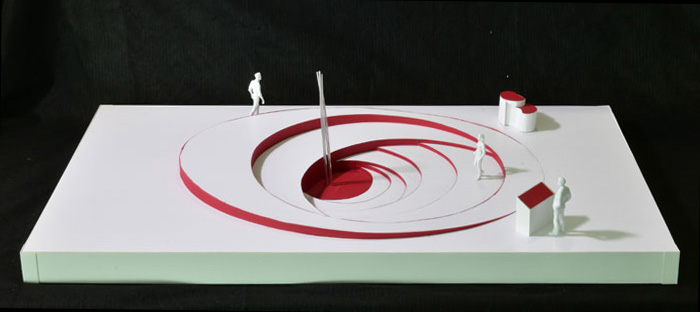
Model for Fountain, photo credit: W. Schmidt, 2019
My idea was driven by the conviction that the climate crisis must be announced from every corner of our everyday lives. Scientific literacy must be promoted in a way that parallels and supersedes the saturation of advertising in the public sphere.
A fountain is a meeting place, a decorative centerpiece, a commemorative monument. I associate fountains with majesty, even ecstasy. They are adorned with over-the-top sculpture from which water pours, spurts, ejaculates. My proposal was the opposite. Using the maximum width of the allotted space, I designed a hole that sinks into the ground, something reminiscent of strip mining. The different levels in the basin refer to graphs of the shrinking polar ice caps. The proposed material was a two-toned granite, whose contrast was achieved by polishing and sanding the surface. The sides perpendicular to the ground would be polished to a bright, shining red, while the parallel surfaces would remain bleached. The effect is a hole that looks burnt out of the stone.
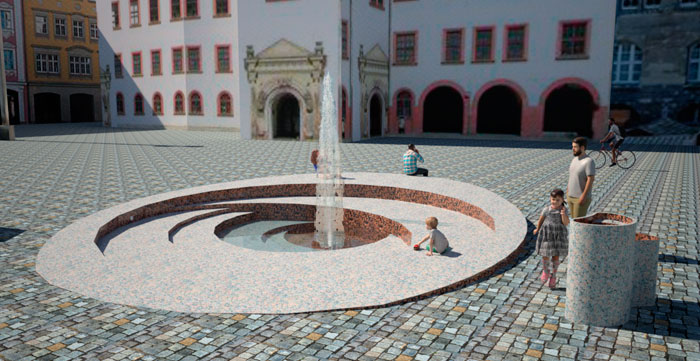
The single jet of water emerges from the very bottom of the basin, which drops 60 cm into the ground. At the start of the day the water reaches a height of 30 cm, equal to the standing water level at the bottom of the basin. This corresponds to the sea level when we first started measuring in 1880. Every half hour the water rises until it reaches our current day. Thereafter, the future predictions along side the margin of error are shown as a choreographed water show. At five minute intervals, the fountain first reaches the worst case scenario, drops to the minimum prediction, lingers for 15 minutes at the middle value and finally returns to our current level. Half an hour later, the predictions for the following 20 years are shown.

How often the water height changes is calculated by how long the fountain is turned on and how many years are being considered. I suggested that each year new predictions would be delivered from the Alfred Wagener Institute for Climate Research and the prognosis would always reach 100 years in advance.
In order to bring more context to the work, I suggested a plaque explaining the concept as well as an LED clock that would show the year to which the water height relates. Even if people were not to read the explanation of the project, the hope is that they would eventually be curious about the numbers that change as the water height changes. To find out the relationship, they could then read the plaque, which in turn would lead them to the city website where the movement of the fountain, and thus our sea levels, would be recorded and tracked in an easy-to-understand graphic. Alongside the fountain I also designed a drinking fountain with levels for adults and children.
